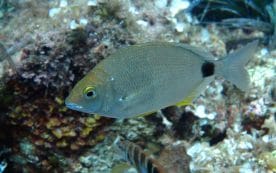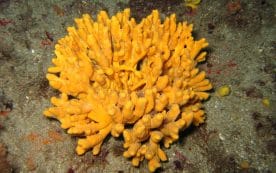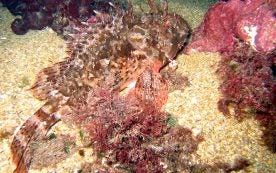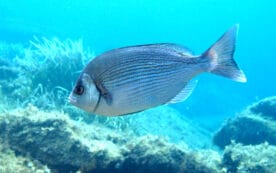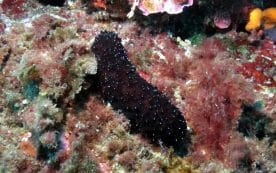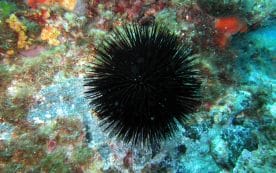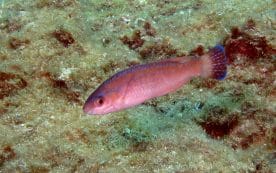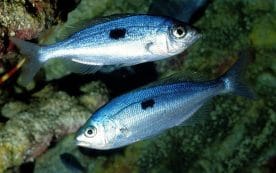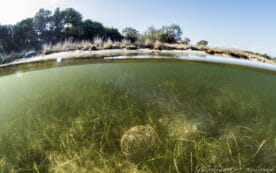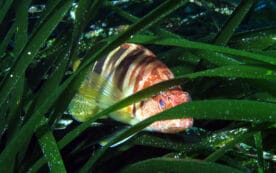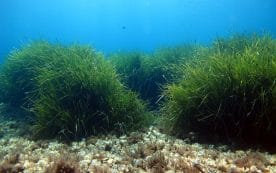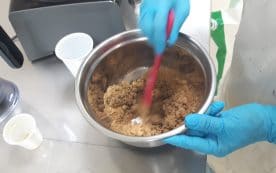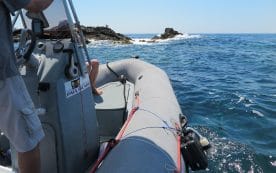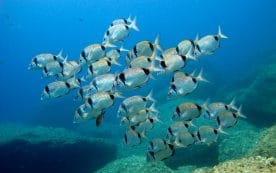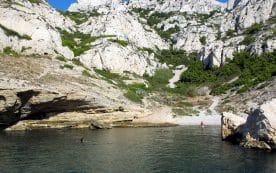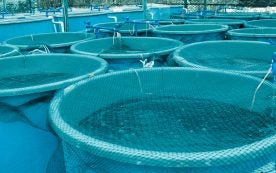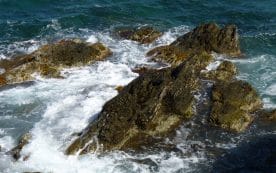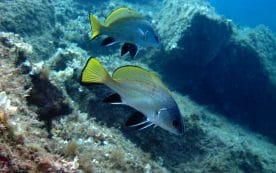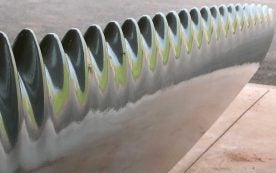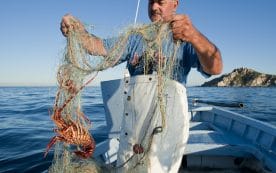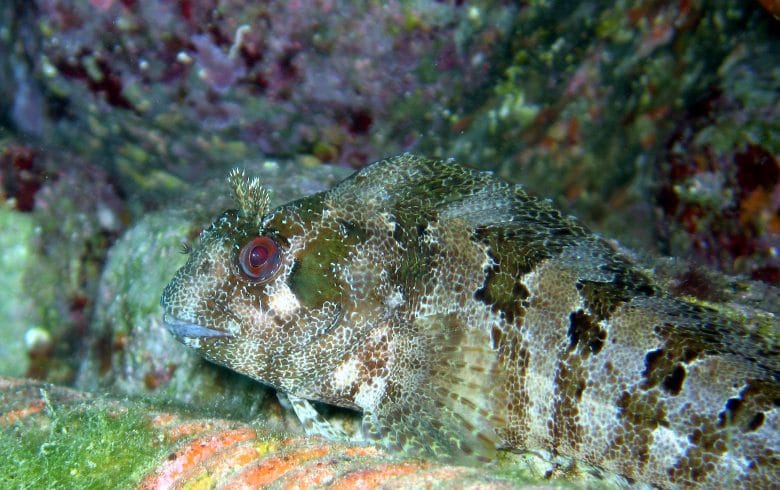
The tompot blenny has a long, squat body and a large head with a big mouth and thick lips. It is rusty-brown with 6 or 7 darker brown stripes extending onto the dorsal and anal fins. Its body and head are dotted with small white spots. Averaging 15 to 20cm long (and up to 32cm at the most), the tompot is the largest blenny in the Mediterranean. It feeds on seaweed and small invertebrates, including young sea urchins and ophiuroids, living around rocky bottoms that have holes, crevices or boulders and Posidonia seagrass, from the surface down to depths of 30m. It is found in the Adriatic and Aegean Seas and the Western Mediterranean basin and from Ireland to Morocco in the Atlantic.
Phylum: Vertebrates
Class: Osteichthyes
Order: Perciformes
Family: Blenniidae
Scientific name: Parablennius gattorugine
French: Blennie baveuse, Blennie gattorugine, Cabot
Spanish: Cabruza
Italian: Bavosa rugine
German: Gestreifter Schleimfisch

